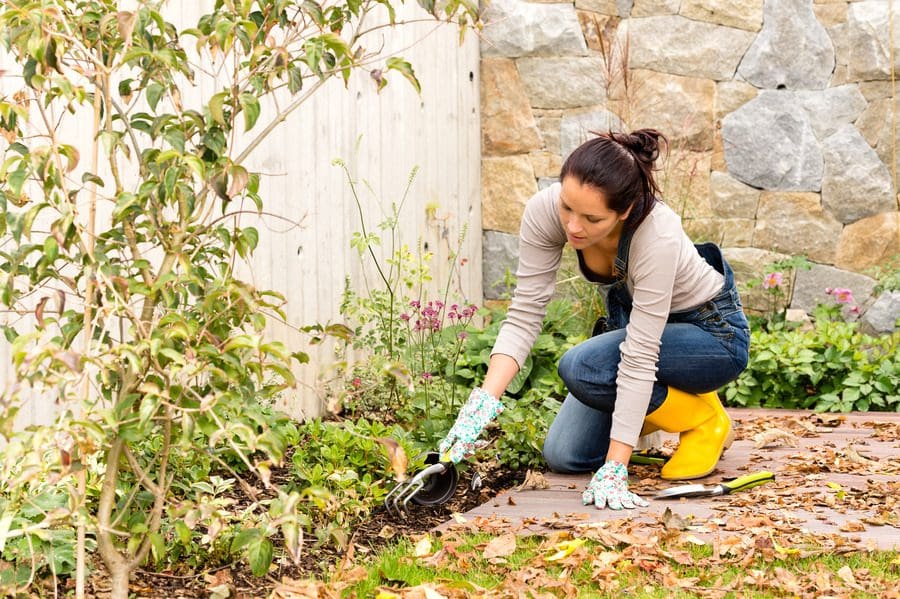Winter is just around the corner, which means many of us are busy prepping our homes for winter. But an area that tends to get overlooked? Our yard. Sure, we may rake it a few times and cut back what we know needs trimming, but it takes a little more to ensure that our yards will be lush and green come spring. Not sure where to start? We can help! Here are a few yard work tasks that should be checked off the to-do list before winter.
Let the Leaves Fall Where They May
This first one may come as a shock to some! Despite your urge to rake your entire yard, fallen leaves help insulate plant roots and prevent erosion – so it’s best to leave them alone. Those with gardens should especially avoid raking because the leaves provide food and shelter for wildlife, which creates just the kind of ecosystem you need for a successful harvest next year.
Mow the Leaves
We know we just said to let the leaves fall where they may, but while we’re skipping the raking duties, we aren’t skipping the part where you run your mower over them before the first snowfall. Once the leaves are all chopped up, they’ll decompose much faster, meaning they quickly become a source of nutrition for your plants. And a special note for our green-thumbed friends: If you have extra mulched leaves, sprinkle some in and around your garden.
Wrap Your Trees
If you have any thin-barked trees in your yard, you should consider wrapping the trunks to avoid cracking. Throughout the winter, the sunshine during the day warms the tree sap, but as night falls, the once-warm sap can quickly freeze, causing the bark to split. You can avoid this by purchasing paper tree wrap and using duct tape to ensure it stays in place. Come springtime, all you have to do is remove the wrap, and new growth won’t be compromised.
Water No More
If you’re experiencing a warmer, dryer fall season, you can continue watering your lawn until the first frost – but no more after that. As the temperatures drop, watering plants only makes them die quicker. If you live in a warmer climate but aren’t getting much rain, continue to water as needed.
Got Spring Bulbs?
Now is the time to plant spring-blooming bulbs like hyacinths, daffodils, and tulips – as well as edible blurbs like garlic and shallots – so they can root and bloom beautifully next year.
Got Tender Bulbs?
Tender bulbs like dahlias don’t do well once it’s cold enough to frost. Instead, you should dig them up and keep them indoors until spring. If you’re unsure of when to dig them up, look at their leaves: Once they begin to turn black, they’re ready. Wrap them in newspaper and store in a dark, damp area like the basement. In the spring, replant the ones that look healthy. It’s not unusual for some bulbs to rot over the winter; those can be tossed.
Start Your Seed Collection
If you have annuals you loved this year, collect their seeds and save them for spring. Keep them in an envelope or a jar and store them somewhere dry. Come next year, you can plant them and enjoy them again.
Sources: Lowe’s, True Value, NPR: “Garden Talk”






